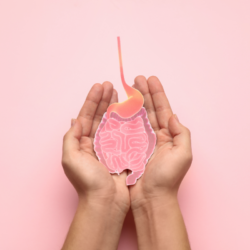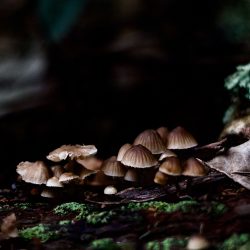With the approach of spring, advertisements extolling the merits of liver-draining plants are indeed beginning to flow. The choice of a plant is not the result of chance or of a few readings found here and there on the net. Each plant has specific properties. These depend in particular on the active ingredients that compose it, and knowledge of your temperament as well as your naturopathic field is essential to make a coherent choice.
The purpose of this article is to present to you in brief four local plants which have an action on the hepatic sphere , and to show their specificities. It in no way replaces the advice of a naturopathic herbalist, who alone will be able to ultimately offer you the galenic form and the appropriate dosage.
The hepatobiliary properties of the artichoke
The artichoke is cholagogue , amphocholeretic (regulation of choleresis), cholecystokinetic as well as anticholestatic , thanks to the flavonoids (luteolin flavonol) it contains. This increase in the secretion and elimination of bile acids explain the effectiveness of the artichoke in dyspepsia (pain, discomfort, burning sensation in the abdomen, nausea, vomiting, etc.) and in the syndrome of irritable bowel (bloating, abdominal pain, constipation, etc.).
In 2003, a multicenter, double-blind, placebo-controlled and randomized trial, conducted for 6 weeks in 244 patients with functional dyspepsia, notably demonstrated a statistically significant efficacy of the aqueous extract of artichoke leaves.
Antioxidant (with increased glutathione peroxidase), the ethanolic extract has the most powerful antioxidant activity . Aqueous and ethanolic extracts of the leaves of Cynara scolymus inhibit in vitro the basal and stimulated production of reactive oxygen species (ROS) in endothelial cells and in monocytes, in a dose-dependent manner, which demonstrates that the artichoke exerts marked protective properties against oxidative stress induced by inflammatory mediators and oxidized LDL-cholesterol. The antioxidant activities of the plant, highlighted by a dozen studies in the early 2000s, are also linked to its flavonoids and phenolic compounds.
Hepatoprotective (by inhibiting intracellular protein kinases, by inhibiting nitrosation and by inducing apoptosis), artichoke leaf thus promotes hepatic regeneration .
The hepatic properties of milk thistle
Hepatoprotective action for a good detox:
The silymarin contained in milk thistle protects the liver by different mechanisms:
- Stabilization of the plasma membrane of the hepatocyte. It inhibits the absorption of certain toxins such as those of the amanita phalloides, for example, by preventing their attachment to the cell surface and by blocking the membrane transport system of these poisons.
- The trapping of many free radicals via the formation of more stable and less reactive compounds. It also helps maintain the level of glutathione and superoxide dismutase in the liver.
- The increase, in vitro , of the synthesis of hepatocyte proteins thanks to the stimulation that it exerts on RNA polymerase 1 which is involved in the synthesis of ribosomal RNAs. Ultimately, this would increase protein synthesis, thus helping to increase the regeneration capacities of the liver.
A meta-analysis of randomized controlled trials conducted in 2019 involving 1198 people with tuberculosis not only showed that silymarin from milk thistle has prophylactic activity against anti-tuberculosis drug-induced liver damage, but that it also improves liver function in treated patients.
Protective and curative action against toxins to clean up liver functions:
Taking silybin significantly improves the state of health in people poisoned by amanita phalloides after failure of a reference treatment. Silymarin actually protects the liver against damage induced by paracetamol, azidothymidine (AZT), acetaminophen, ethanol and D-galactosamine.
Cholagogue action to decongest:
By promoting the membrane expression of the bile salt export pump which allows the elimination of bile , silymarin protects in vivo in particular from estrogen-induced cholestasis.
Dandelion secretion/excretion function stimulation activity
At the biliary hepatic level, dandelion acts with a cholagogue effect as well as a mild choleretic activity . This plant is used for a long time to stimulate the secretion of bile.
Detoxifying , the action of this plant is exerted in particular at the level of phase 2, with a very significant enzymatic induction of UDP-glucoronosyl transferase (+ 244% compared to the control group). At the level of phase 1, a significant decrease is observed at the level of the activity of CYP1A2 and CYP2E, whereas no action on CYP2D and CYP3A was observed.
The hepatic properties of Rosemary
Hepatoprotection:
This effect of rosemary is linked both to the presence of carnosic acid, carnosol and rosmarinic acid. The hepatoprotective action of the first two of these compounds would pass in part by their ability to maintain and increase the enzymatic activity of glutathione peroxidase (GPx) and superoxide dismutase (SOD), whose activity is reduced in the presence of a poison.
Hepatic detoxification:
In vitro , carnosic acid and carnosol are phase II enzyme activators. Additionally, rosmarinic acid is able to activate both phase I enzymes (CYP) and phase II enzymes (glutathione S-transferase and UPD-glucuronosyltransferase).







